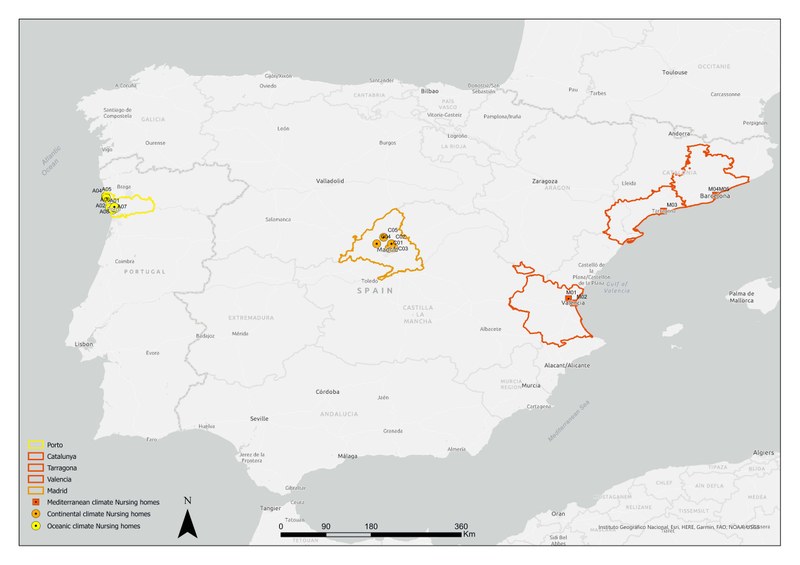Research methodology

Research Methodology
The aim of this project is to determine an indoor thermal comfort model for the elderly and analyze the thermal comfort implications on energy consumption in buildings occupied by the elderly.
To that aim, different typologies of elderly care centres (age, constructed area, type of envelope, type of HVAC system, etc.) in the most representative climatic regions (Mediterranean and continental) in Spain will be selected.

Location of the assessed nursing homes
For each building, different indoor rooms (dining room, living room, gym, etc.) along the different seasons (heating, cooling, neither heating nor cooling) will be monitored.


Indoor environmental parameters (air temperature, mean radiant temperature, air velocity and air humidity), outdoor conditions (outdoor air temperature and humidity); and energy (electricity and gas) consumption will be collected.

Equipment Delta Ohm HD 32.3
At the same time, residents will be surveyed to determine their Thermal Sensation (TS), Preference (P) and degree of acceptability (A). Data about physical activity, clothing, age, weight, body mass index, sex, among others will also be collected.

Thermal sensation scale
These data will be used to develop a thermal comfort model for the elderly for each climatic region.
Finally, energy implications on the application of these new thermal comfort models will be evaluated to determine how adapting temperature, humidity and air renovation set points influence energy consumption.
Share: